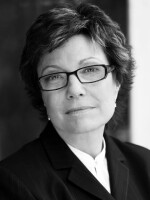In Syria, a four-month protest movement and a government crackdown have strained the country's ethnic and sectarian mix.
The government and military command are dominated by Alawites, a minority sect that is an offshoot of Shiite Islam. The protesters are mostly Sunnis and ethnic Kurds.
Syrian officials have warned of sectarian war if the protests continue. That message has spread fear among Syria's minority communities — in particular, Syrian Christians.
Concern About 'The Morning After'
Ghasan Maadi is worried. He lives in Bab Touma, a Christian neighborhood in central Damascus with cobblestones and church bells. His shop is tiny, the size of a closet, but he's always made a living until now.
"The people are afraid now, walking in the streets," Maadi says. "They stay most of the time in their houses; they are afraid of spending too much money now."
He's convinced that protesters are Muslim extremists and wants no part of their demands "because they are destroying the Syria in this way," he says.
Syria's Christians, about 10 percent of the population, have always been a confident minority. Crosses are worn openly, and Christians have a tacit political alliance with the more powerful Alawites who dominate the government and the military. The regime counts on Christian support.
Fawaz Gerges, a Middle East specialist, says the sectarian divide is real.
"Millions of Syrians who have not actively joined the protesters, even though they are unhappy with the authoritarian Syrian regime, they are terrified about the morning after."
State And Private TV Send Competing Messages
On one afternoon, a Greek Orthodox priest performs a wedding for a happy bride and groom. But the Rev. Gabriel Daoud says his parish is nervous. He believes the protest movement is anti-Christian with aims to undo Syria's fiercely secular system. But he does acknowledge that some in his community have joined the protests.
"There are a few Christians, but they are individuals. They want to push democracy; they want to push human rights," Daoud says. "I don't believe in them."
What do Syrians believe? Activists say they are fighting for democracy and reform — but pro-government supporters point to other messages. They cite examples like the Syrian Muslim cleric who broadcasts from a private Saudi satellite channel. He preaches sectarian hate, they say, and some protesters have chanted his name.
Activist Assaad Al-Achi says Syrian state TV has a part in defining the protest movement as Islamist.
"They do incite sectarianism sometimes by really trying to show that this is an uprising by the Sunni fanaticals," Achi says.
Achi moved to Qatar recently for work. His family is in Syria and he's disturbed by what he sees on state TV.
"People who can see what the Syrian TV is doing, they are laughing at it," he says. "They are actually making videos ... to just mock it. But, it is, at the same time, inciting — I mean it's creating hard-liners, I guess."
'A Slow Burn'
There are hard-liners on both sides, says Paul Salem, head of the Carnegie Middle East Center in Beirut. He says four months of protests have created a divide.
"I don't think it intended to do that. I think the protests are trying to remain very nationalist and very focused on democratic demands, but once people start getting shot, issues of community and identity certainly are triggered," Salem says.
In a country that has been stable and calm for 30 years, the past four months have been shattering, Salem says. Now, all sides agree it is time for change, and Syrians are aware of the risks.
"People in Syria do not want a civil war. People in Syria do not want to end up like Iraq, or Lebanon or Libya. This is a very, very serious crisis," he says. "Sectarian tensions are very high, tensions between elements of the population and the government; the government has apparently lost, on and off, control of certain towns and cities. It is maybe a slow burn, but it is a decided burn."
A slow burn by design, says Salem, by those trying to push for change without pushing the country into chaos.
Copyright 2022 NPR. To see more, visit https://www.npr.org. 9(MDAzMjM2NDYzMDEyMzc1Njk5NjAxNzY3OQ001))







